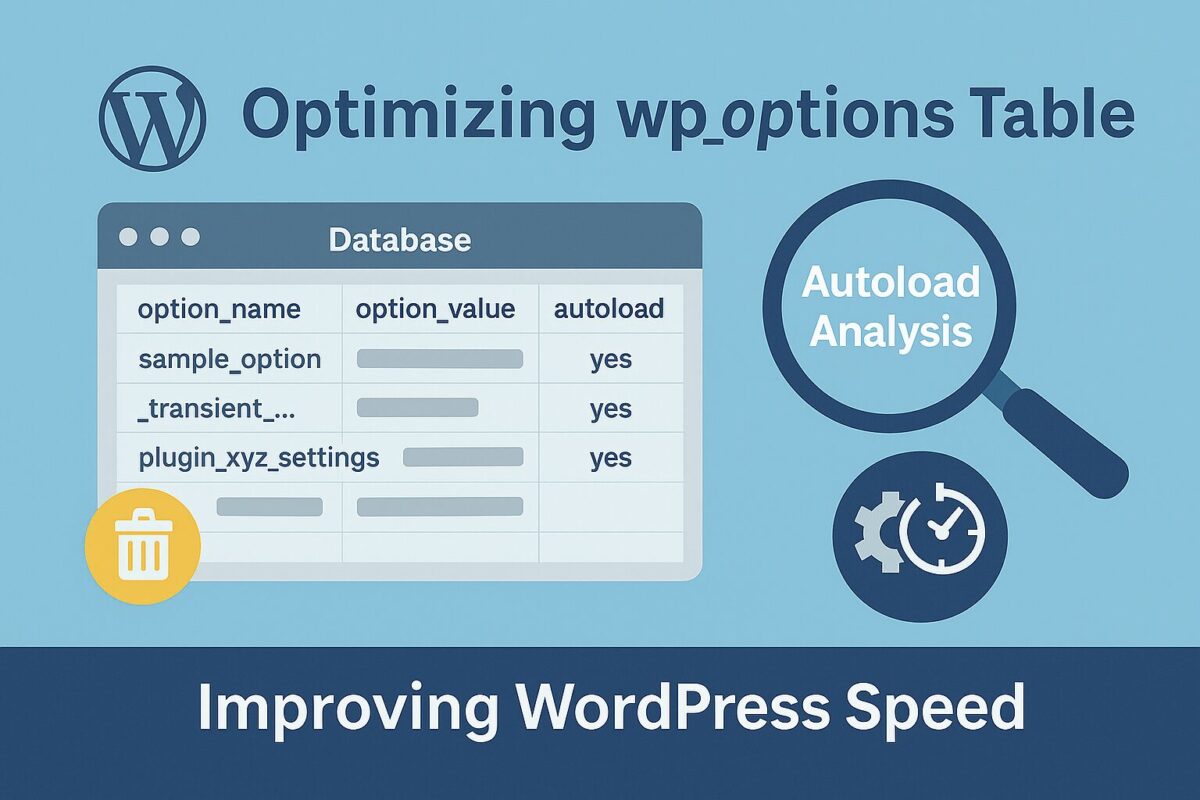How to Optimize wp_options Table to Speed Up Your WordPress Site

wp_options table is one of the most critical parts of any WordPress database. It stores essential settings for your site, plugins, themes, and WordPress itself. But over time, this table can become bloated — especially with too many autoload entries — leading to slower loading times and poor performance.What Is the wp_options Table?
The wp_options table contains configuration settings such as:
- Site URL and admin email
- Plugin settings and cached data
- Theme customizations
- Temporary options (transients)
It is loaded on every page request. So if it’s too large or cluttered with unnecessary entries, it can slow down the entire site — especially the admin dashboard.
Understanding the Autoload Column
Every entry in wp_options has an autoload field with values yes or no. When set to yes, it means that WordPress loads this value on every single page load — even if it’s never used.
That’s why cleaning up unused autoloaded data is one of the most impactful database optimizations you can do.
How to Analyze wp_options
You can access the table using phpMyAdmin or a tool like Adminer. Run the following SQL query to see how much data is autoloaded:
SELECT SUM(LENGTH(option_value)) AS autoload_size
FROM wp_options
WHERE autoload = ‘yes’;
This tells you how many bytes are loaded on every page request. Ideally, it should be less than 500 KB. Some poorly optimized sites exceed several megabytes!
List the heaviest autoloaded items:
SELECT option_name, LENGTH(option_value) AS size
FROM wp_options
WHERE autoload = ‘yes’
ORDER BY size DESC
LIMIT 20;
What to Remove Safely
Common unnecessary entries:
- Expired transients:
_transient_*and_site_transient_* - Leftovers from deleted plugins (e.g., pluginname_settings)
- Cache entries (especially if you changed caching plugins)
Important: Always create a full backup before deleting anything!
How to Clean the Table
- Access phpMyAdmin →
wp_options - Sort by
autoload = yesand look for suspicious entries - Delete entries only if you’re 100% sure they’re no longer needed
Alternatively, use plugins like Advanced Database Cleaner or WP Optimize for semi-automatic cleanup, but configure them carefully.
Prevent Autoload Bloat in the Future
- Delete unused plugins completely — don’t just deactivate them
- Avoid plugins that store massive data in
wp_options - Audit your database monthly or quarterly
Want to learn more about related bottlenecks? Check our article on WordPress database optimization for a broader cleanup strategy.
Need Help?
Worried about breaking your site during cleanup? Let our experts do it for you. Request a free audit from SpeedWP Pro and we’ll safely optimize your database and speed up your site — without downtime.
